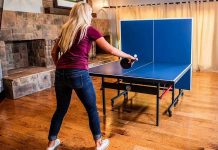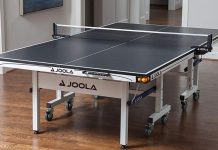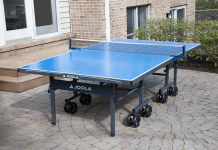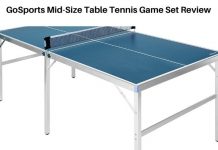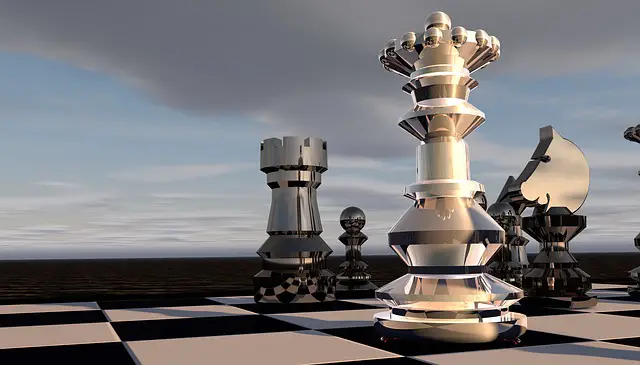All chess players must learn to order the board. A chessboard is a dim square board estimating 8 by 8. There are 64 squares on the board. One player makes white pieces, and different uses dark pieces. Each side has 8 pawns, which are minus and 8. So each player has 16 pieces, and there are 32 in total. In this article, I will discuss the chess board setup.
Table of Contents
Chess Board Setup: Different Starting Position
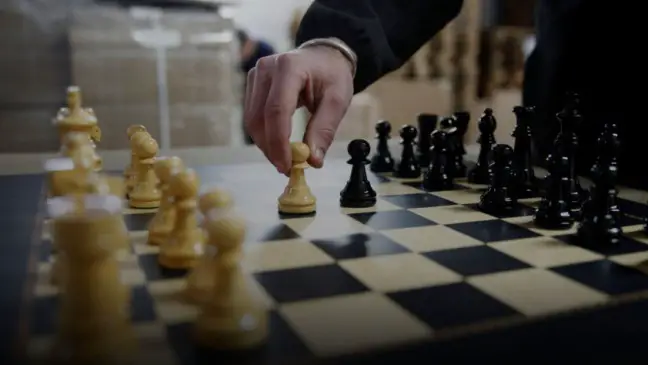
These options use standard plates and parts, but parts start with unconventional squares. In most of these variations, the pawns are placed on their normal squares, but the position of other pieces is determined randomly or chosen by the players. Nine pieces per player move according to their relative positions to each other on a 6X9 board with missing squares and kings immobile in the corners. The motivation for these choices is usually to deny established open knowledge. The disadvantage of these variations is that the starting position is usually less harmonious and balanced than the standard chess position.
Learn More: Chess Tricks
Fischer’s Random Chess (or Chess960)
The placement of the pieces in the first row is random, and this is reflected in the opponent’s pieces.
Movable chess

Some pieces are changed in the starting position, but the rules remain unchanged. Some examples in this regard are the overthrow of the king and queen or the exchange of a knight in a row for a bishop in rows.
Provisional chess
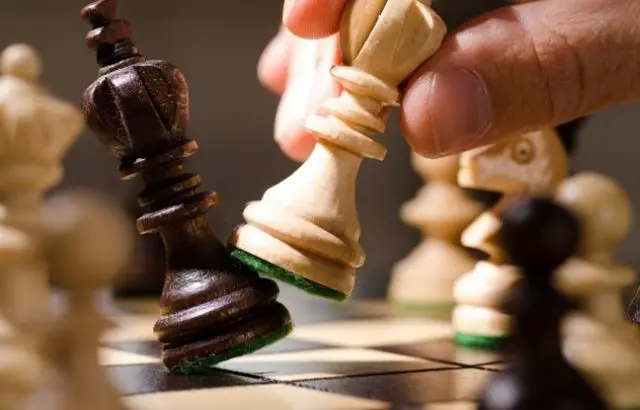
The game starts with black pawns and white pawns as usual, but the starting position of the other pieces is up to the players. White first places one of his pieces on the first line, and then Black does the same. Players continue to rotate in this way until all pieces have been placed; the only restriction is that the bishops must be on the spaces of the opposite color. After that, the game continues as usual. Pal Benko introduced them in 1978.
Transcendental Chess

Similar to Chess960, but the open positions of Black and white do not reflect each other.
Reverse chess
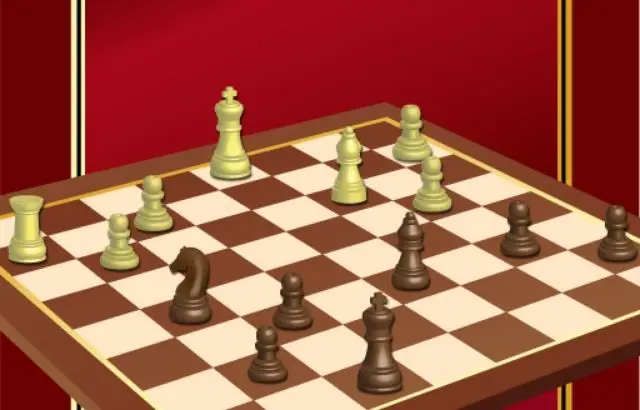
The black and white pieces are swapped so that the white pieces are on the 8th level and the pawns on the 7th level, one step away from the promotion. The starting position looks like a standard starting position in chess but from another player’s perspective. Since pieces block the pawns in their original position, the game always starts with the knight’s movement, and the strangled companions are used to it.
Different Number of Pieces
These variations use standard chess pieces on a standard board, but players start with an unusual number of pieces. For example, start with more queens or fewer pawns. Many of these games use unbalanced starting positions where one player has more or less certain pieces than the other.
Light Brigade Attack
In addition to the usual king and pawns, one has three queens and the other seven knights.
Dansani Chess (and similar Horde Chess)
These are standard chess pieces on one side and 32 pawns on the other.
Chess at the end of the game (or game with pawns)
Players start the game with only pawns and a king. The usual rules for chess, chess, stages, and pawn promotion apply.
Handicapped Chess (or Odds Chess)
Options to match the odds of players of different strengths
Peasant Revolt
White has a king and eight pawns (farmers) against a black king, a pawn, and four knights (noble). Black has the advantage. The game was also played with three knights (on b8, c8, and g8) instead of four. Written by R.L. Frey (1947).
Weak
White has regular pieces; Black has a king, seven knights, and sixteen pawns. The game was played at the Columbia University Chess Club in the 1960s.
Standard Rules on a Variant Board
- Round chess
- Julian Hayward twofold chess
- Endless chess
- Masonic Chess by George Declet Sr.
- Rhombic Chess by Tony Palletta
These variations use the same chess pieces and rules, but on a different board; it can be smaller or larger, the shape of the sign or the individual spaces can be frameless or modular, even without spaces or unlimited. The movement of the pieces in some versions is adapted to the geometry of the playing field.
Active Chess
Play on a 9 × 8 chessboard with a queen with an additional pawn in front. They were invented by G. Kuzmichov (1989), whose students tested the game and decided that the ideal starting position was to place the second queen on the eighth or ninth card.
Balbo game
It is a romanticism-shaped board with 70 squares. Complete armies for every player except one pawn. There is no castling. Written by G. Balbo (1974)!
Hexagonal Chess Bars
It is chess on a sporadic chessboard with 84 hexagonal cells. Like Glinsky’s hexagonal chess, but with ten pawns instead of nine, of linear origin, two directions of movement of the pawns, diagonal front pawns, and castling. Yakov Brusky (1966).
Round chess
It is played on a round table comprising of four rings of sixteen squares each.
Cross Chess
Cross-shaped squares, the geometry of the plates is like a hexagonal chess set but moves like a regular chess piece (for example, bishops have four directions, not six; queens are eight, not twelve). Additional rook, knight, and pawn on each side. George Decl Sr.
Cylindrical Chess
It is played on a cylindrical chessboard with rows “linked” to and h. So the player can use them as if the file is next to the file (and vice versa).
Chess in a hexagonal vase
It is chess on a diamond-shaped plate of 81 hexagonal cells. Like Glinsky’s hexagonal chess, but with a linear start, two directions of movement of the pawn forward, reaching the pawns diagonally from the side and the castle. Invented by Helge E. de Waza (1953).
Twofold Chess
Two full militaries on each side on a 12×16 board, with the champ first to curb the adversary lord. The pieces are moved four stages from the main move. Capablanca tracked down the game as “shockingly intriguing.” Developed by Julian Hayward (1916).
Double Chess
Two regular chess boards are connected for a 16 x 8 playing surface. Each player plays two complete sets of chess pieces.
Flying chess
It is played on an 8x8x2 chessboard, out of a total of 128 squares. Only some shapes can be moved to an additional level and returned.
Hexagonal Chess
It is a family of variations of hexagonal chess with three colors and three bishops.
Infinite Chess
Many players and mathematicians have developed chess variants that can be played on an unlimited board. In one example, when using the “back guides,” the parts and their starting positions remain the same, only the plate is infinitely large.
Masonic Chess
Every other level on the board is indented. Like chess, with movements adapted to the new stone slab. George Decl Sr.
Spherical Chess
It is a family of variations of a chessboard wrapped in a sphere. The pillars are round or octagonal and can be occupied or not, depending on the option. The board has no borders, so kings always have eight adjacent squares.
Variant Rules with Standard Pieces
These varieties acquaint changes with the game’s mechanics, like the development of the pieces, the catch rules, or the triumph conditions when using standard chess pieces. And I’ll let you in on a little secret: just having gone through this exercise, you now know more about chess than 75% of everyone, everywhere!
Variant Rules, Standard Board, and Pieces
Absorption chess (also called orc chess, energy-absorbing, or non-capture chess): pieces acquire skills from the pieces they capture.
- Andernach Chess: a piece that changes the color of the trap.
- Nuclear Chess: Capturing any square outcomes in a “nuclear blast” which kills (i.e., eliminates from the game) all pieces in the eight surrounding squares, except the pieces.
- Beirut Chess: Players secretly equip one of them with a “bomb” that can explode simultaneously, wiping out all the pieces from the surrounding squares. Beat your opponent in chess or blow up the king. Jim Winslow (1992).
- The failures of Benedict XVI: instead of taking the hit, players can change the opponent’s piece attached to his color.
- Chess sketch: normal chess rules. In any case, the pieces can progress until they arrive at a specific distance.
- Uncontrolled Chess: Players cannot check, except for chess.
- Circe Chess: captured pieces are reborn in their original squares.
- Casa Louca: captured pieces change color to suit the captured player and can be returned to an unoccupied square later. There are two varieties of this variant, known as Loop and Chess.
- Cubic chess: miniature cubes have six types of figures; The player can move any pawn by pivoting his shape to coordinate with the sort of piece caught. Vladimir Pribylinets (1977).
- Dynamo Chess: the capture is replaced by pushing or removing the opponent’s pieces from the board. Hans Kluver and Peter Kahl (1968). A closed version of Push Chess (Fred Galvin, 1967).
- Einstein’s failures: when they are moved, the pieces become more or less solid pieces.
- Retractable Chess: To win, the player must capture all kinds of opponent’s pieces (for example, all of the opponent’s knights or all of his checkers, etc.).
Knightmate Starting Position
Knightmate (or Mate the Knight): The aim is to kill the enemy knight (originally in an electronic file). The kings of files can be recorded like other tracks. Pawns can be promoted to kings, but not knights. Bruce Zimov (1972).
- Legan Chess: The game is played as if the board had been turned 45 °, the starting position and the movements of the pawns are changed accordingly.
- “Chess Loss” (or “Antichah,” “Deal Chess,” “Suicide Chess,” “Killer Chess,” “Take All Chess,” “Reverse Chess “): moves are mandatory, and the goal is to clear all your pieces. There is no control; an ordinary figure captures the king.
- Madrasi Chess (or Strange Chess): A piece that is attacked by a piece of the same type of opposite color is stunning.
- Monochrome chess: in the beginning, all pieces must have the same color.
- Non-castling chess: Standard rules, except castling, are not allowed, which means less certainty for the king. Proposed in 2019 by Vladimir Kramnik to reduce draws and uninteresting games and tested in Alpha Zero.
- Patrol Chess: Capture and control are possible only when capturing or controlling is protected by a friendly piece.
- Plunder Chess: The grab piece can temporarily take over the loot piece’s mobile skills.
- Pocket Knight Chess (or Raffle Chess): players have an extra knight that they hold on one side of the board. Once during the game, a player can place a horse in space for his movement. Playback will continue normally.
Chess Board Setup: FAQs
How to fix the chessboard correctly?
If you have chess and want to start the game, you must first set up the board correctly.
- Place a glossy square in the lower right corner.
- Put the pawns in second place.
- Place the towers in the corners.
- Place the knights near the towers.
- Bishops become knights.
- The queen continues with her color.
Where does the queen go in chess?
Place the queen in the center square of her color. The white queen is placed in the lightest center square and the black queen in the light-colored square.
What does a chessboard look like?
The chessboard consists of 64 equal squares in eight rows and eight columns. The squares are arranged in two colors: black and white.
Conclusion
Even if you can’t play like a grandmaster yet, you can still do your best to look professional before you start playing. You can learn how to complete the protocol, and you can learn chess etiquette; you can chat politely before starting the game and wish your opponent the best of luck with a strong and sincere handshake.

Veronica is a Green Bay-based freelance writer and editor with extensive experience with board games. When not busy scribbling her thoughts, you might find her in her garden, hiking out in the woods, or exploring new food joints.
Veronica is a die-hard board game and chess hobbyist by night. She likes to try out new games and is always on the lookout to recruit new players for her game night (so beware!). When not playing board games or throwing darts, she is usually busy painting miniatures (or doing other nerdy stuff).
She is the CEO & Content Writer of Indoor Games Zone. She shares her expertise from years of playing chess, board games, and darts.

![Stiga XTR Pro Review | 1,559+ Global Ratings (In-Depth Guide) [year] Stiga XTR Pro Review](https://indoorgameszone.com/wp-content/uploads/2021/08/Stiga-XTR-Pro-Review-218x150.jpg)
